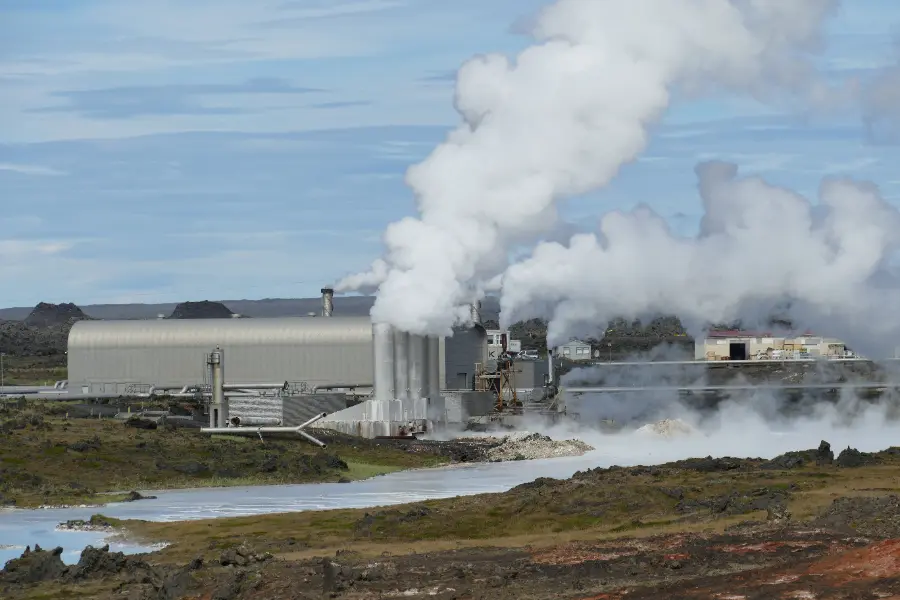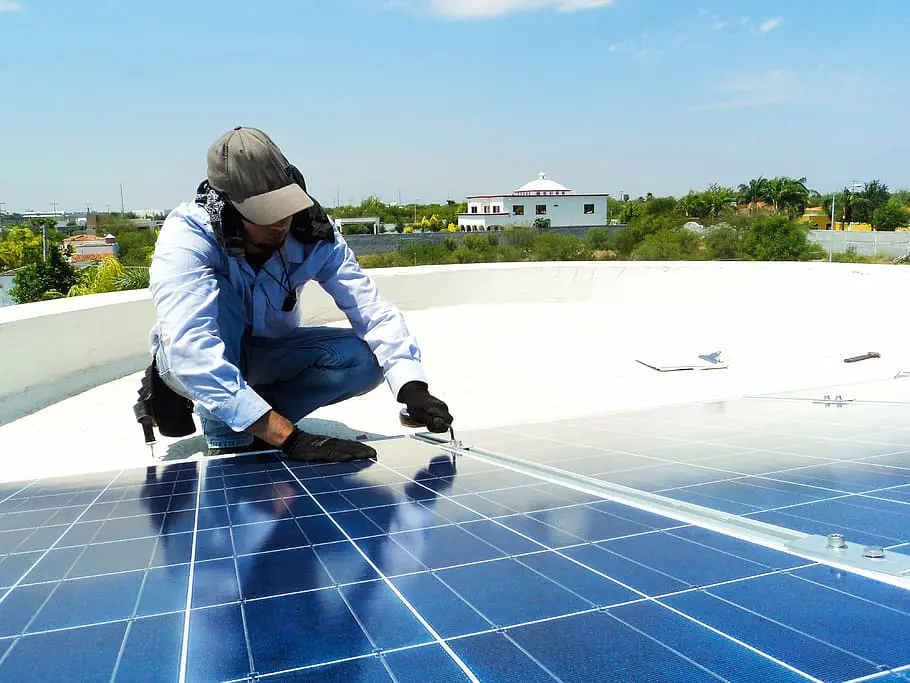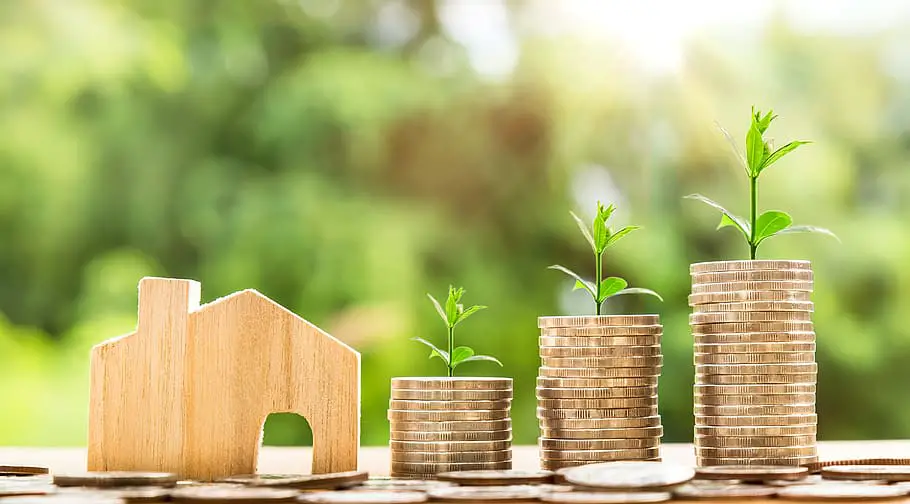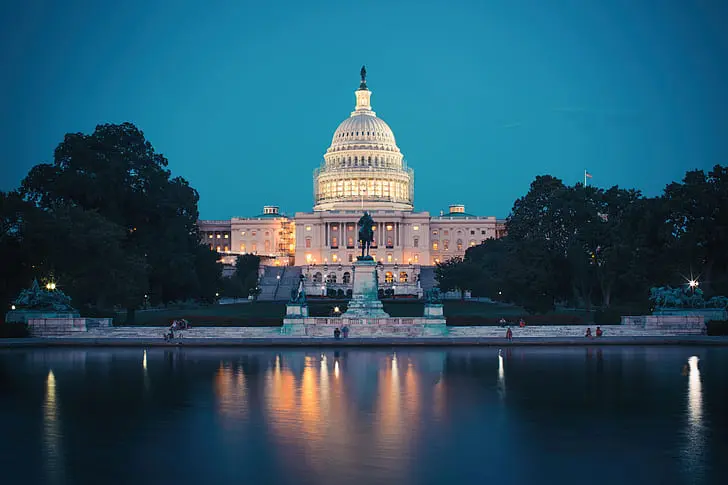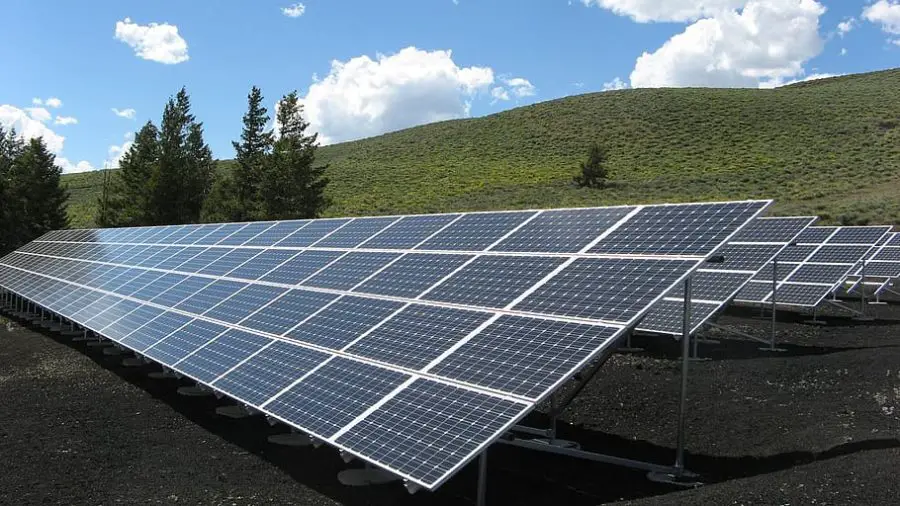
Discover the ins and outs of clean energy sources in our comprehensive guide. From solar panels to wind farms, learn how we can combat climate change and secure a sustainable future.
So, you’re curious about clean energy sources, huh? Well, you’ve come to the right place!
In a world grappling with climate change and skyrocketing electricity bills, clean energy is more than just a buzzword. It’s a roadmap to a sustainable future.
From the power of the sun to the energy beneath the Earth’s surface, let’s dive into how these incredible technologies are shaping our world for the better.
Introduction To Clean Energy Sources
Clean energy sources are forms of energy that have a minimal impact on the environment and help reduce greenhouse gas emissions. These include solar energy, wind power, geothermal energy, and hydroelectric power. They’re essential for combating climate change and reducing reliance on fossil fuels, offering a sustainable path for electricity generation.
Welcome to your crash course on clean energy sources! Ever wonder how we can power our lives without giving Mother Earth a hard time?
That’s where clean energy comes into play. It’s not just a trend; it’s a game-changer in the fight against climate change and those rising electricity bills.
We’re diving deep into everything from solar panels and wind farms to the nitty-gritty of geothermal energy. Ready to become a clean energy aficionado? Let’s get started!
Brief Overview of the Significance of Clean Energy
Alright, let’s kick things off by talking about why clean energy is such a big deal.
You’ve probably heard about climate change and global warming, right?
These aren’t just buzzwords and they’re serious issues that are affecting our planet.
Clean energy is like the MVP in the fight against these environmental challenges.
By reducing greenhouse gas emissions and cutting down on pollution, clean energy sources are helping us pave the way for a more sustainable future.
Plus, they’re a win-win for your wallet, often being more cost-effective in the long run compared to traditional energy sources like coal and natural gas.
Outline of What the Post Will Cover
So, what can you expect from this deep dive into clean energy sources? We’re going to cover all the bases.
First, we’ll explore solar energy, how solar panels work, their environmental impact, and how they’re becoming more affordable.
Next, we’ll move on to wind energy, looking at both large-scale wind farms and smaller wind turbines that you might even be able to install at home.
We’ll also dig into geothermal energy, which taps into the Earth’s natural heat, and hydroelectric power, which harnesses the energy of moving water.
And that’s just the tip of the iceberg! We’ll also discuss the role of the United States in clean energy adoption, how local governments are getting involved, and what you can do to make a difference.
The Untold Benefits of Residential Solar Panels
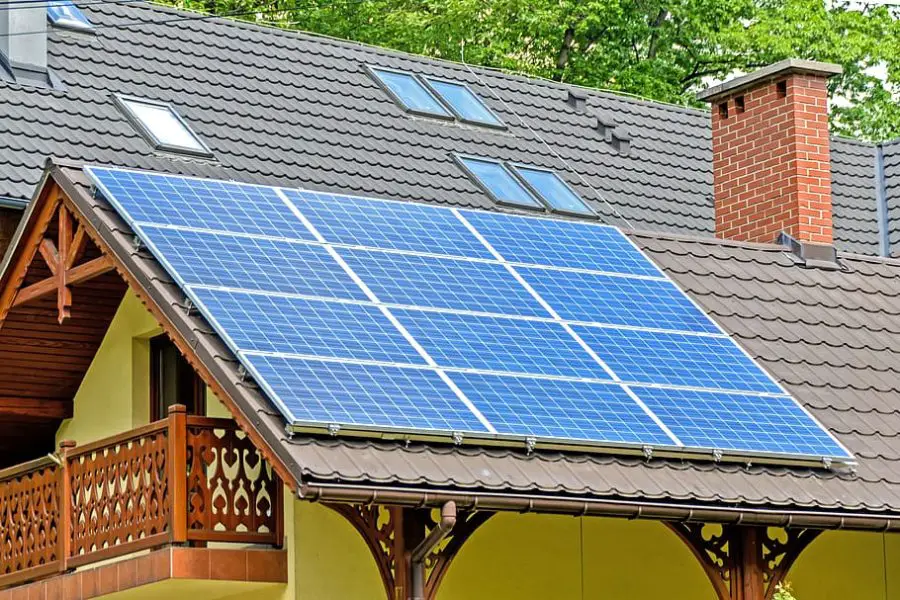
Hey, have you ever looked up at the sun and thought, “Wow, that’s a lot of untapped energy?” Well, you’re not alone!
Welcome to our deep dive into the untold benefits of residential solar panels.
These shiny rectangles are more than just a modern lawn or roof ornament. They’re your ticket to energy independence and a greener lifestyle.
From slashing your electricity bills to reducing your carbon footprint, residential solar panels are like the Swiss Army knife of clean energy solutions. Curious to know more? Let’s dig in!
Why Solar Energy is Gaining Momentum
So, first things first, why is solar energy suddenly the talk of the town? Well, it’s not just because it’s a cool, futuristic concept.
Solar energy is gaining momentum for some very concrete reasons. For starters, it’s a fantastic way to combat climate change.
Unlike fossil fuels, solar panels don’t emit greenhouse gases, which is a huge win for the planet.
Plus, technological advances have made solar panels more efficient and less expensive than ever.
Remember when flat-screen TVs used to cost a fortune? It’s a similar story with solar panels and the prices have dropped significantly in recent years, making it accessible for more people.
The ROI of Installing Solar Panels
Now, let’s talk money, because who doesn’t love saving some cash? The return on investment (ROI) for solar panels is pretty darn impressive.
Sure, there’s an upfront cost, but think of it as an investment in your home and the planet.
Most homeowners see a significant reduction in their electricity bills, sometimes even eliminating them entirely.
And don’t forget about the tax incentives and rebates that many local governments offer for going solar.
Add it all up, and you’ll find that your solar panels can pay for themselves in just a few years.
After that, it’s pure savings, my friend. So, not only are you doing something great for the Earth, but your wallet will thank you too!
Debunking Common Myths About Wind Energy

Wind energy sometimes it feels like it’s surrounded by as many myths as the ancient gods of wind themselves!
So, are wind turbines really the noisy, bird-killing machines some people make them out to be? Spoiler alert: Not really.
Welcome to our myth-busting session on wind energy, where we’ll separate fact from fiction and give you the lowdown on why wind power is actually a pretty awesome clean energy source.
Ready to have your mind blown (by facts, not wind)?
Breaking Down Misconceptions
Alright, let’s get down to business and tackle some of those myths you might have heard about wind energy.
First up, the noise. Some folks say wind turbines are as loud as a rock concert, but that’s far from the truth.
Modern turbines are designed to be much quieter, so unless you’re standing right next to one, you’re unlikely to hear much.
And what about the birds? While it’s true that early wind farms had some impact on bird populations, newer designs and better placement have significantly reduced those risks.
The True Costs and Benefits
Now, let’s talk dollars and cents, along with some environmental sense. One of the myths is that wind energy is super expensive.
While there’s an initial setup cost, the ongoing maintenance is relatively low. Plus, the wind is free!
You’re harnessing a natural resource that doesn’t require mining or drilling. And let’s not forget the environmental benefits.
Wind energy doesn’t produce greenhouse gases, making it a clean option for electricity generation.
In fact, according to the U.S. Energy Information Administration, wind power accounted for a good chunk of renewable electricity generation in recent years.
So, not only is wind energy lighter on your wallet in the long run, but it’s also kinder to Mother Earth. How’s that for a win-win?
A Beginner’s Guide to Understanding Hydroelectric Power
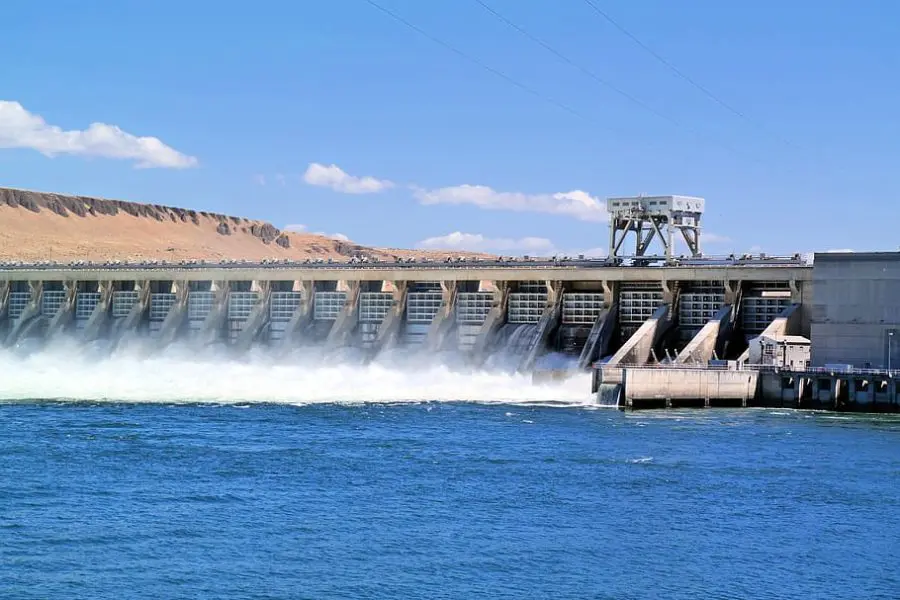
Ever stood by a rushing river and thought about the sheer power it holds?
Well, that’s what hydroelectric power is all about. Capturing the energy of moving water and turning it into electricity.
It’s like putting that river to work but in the most eco-friendly way possible. Intrigued?
Great, because we’re about to dive into the ins and outs of hydroelectric power, making it easy for beginners to understand. Ready to go with the flow?
Basics of Hydroelectric Energy
So, let’s start with the basics. What is hydroelectric power, and how does it work?
Imagine a river or a dam, where water is flowing or falling. That movement has energy, and hydroelectric systems capture it.
Picture a water wheel in an old mill, but on a much larger scale and with a lot more science behind it.
When water flows through turbines, it spins them, and that spinning action is converted into electricity.
It’s like a cycle of energy, from water to mechanical to electrical, all happening in a pretty seamless way.
And the best part? Once the infrastructure is in place, the water keeps flowing and the electricity keeps generating.
It’s like a renewable cycle that keeps on giving.
Its Role in Clean Energy Production
Now, let’s talk about why hydroelectric power is a key player in the clean energy game. First off, it’s renewable.
Rivers will keep flowing, and as long as they do, we can generate electricity.
Second, it’s clean. Unlike fossil fuel-based power plants, hydroelectric setups don’t emit greenhouse gases.
That’s a big deal when we’re talking about combating climate change and reducing our carbon footprint.
According to the International Renewable Energy Agency, hydroelectric power makes up a significant portion of global renewable electricity.
So, not only is it a tried-and-true method, but it’s also a cornerstone in our efforts to create a more sustainable energy landscape. How cool is that?
Is Geothermal Energy the Forgotten Renewable?
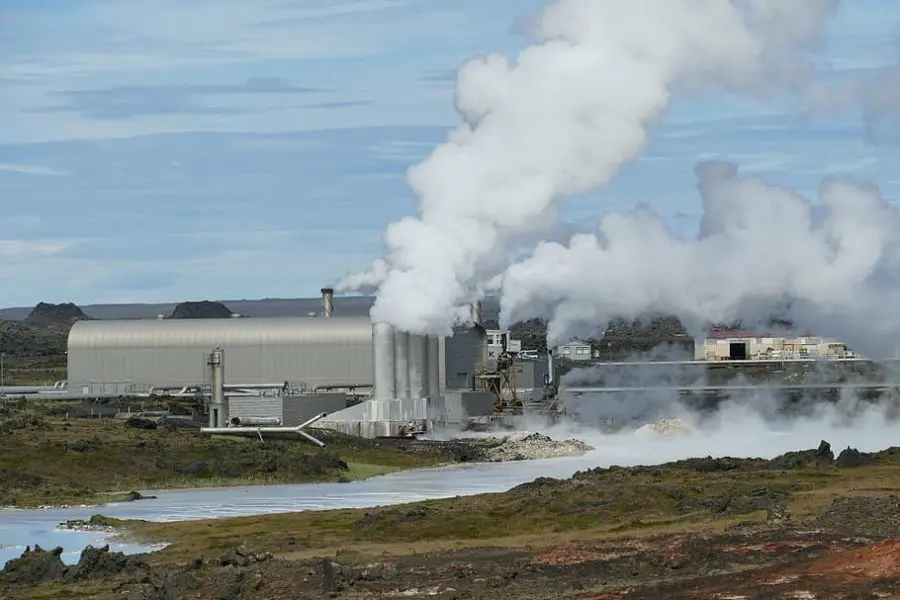
Hey, ever heard of geothermal energy? No? Well, you’re not alone.
It’s like the underrated indie band of the renewable energy world. Super cool but not as mainstream as solar or wind.
Geothermal energy taps into the Earth’s natural heat, right from its core, to generate electricity and even heat buildings.
It’s like the Earth is giving us a warm hug, and who doesn’t love a good hug?
Ready to learn more about this often-overlooked but incredibly potent source of clean energy?
Introduction to Geothermal
Alright, let’s start with the basics of geothermal energy. Imagine the Earth as a big, hot ball.
Deep down, beneath the surface, there’s a lot of heat thanks to natural processes like radioactive decay.
Geothermal energy systems tap into this heat by drilling deep wells to access hot water and steam.
This heat can then be converted into electricity or used directly for things like heating buildings.
It’s like tapping into the Earth’s own furnace, but in a way that’s sustainable and doesn’t harm the planet.
And just like other renewable resources, it’s a gift that keeps on giving, as the Earth’s core isn’t cooling down anytime soon!
Why It’s Often Overlooked
So, why is geothermal the wallflower at the clean energy party?
Well, for starters, it’s a bit more location-specific than other renewable sources.
You need certain geological conditions like volcanic or tectonic activity to really make it work.
That’s why places like Iceland or parts of the western U.S. are hotspots for geothermal plants.
Another reason is the upfront cost. Drilling into the Earth’s crust isn’t exactly a weekend DIY project and it requires a significant investment.
But here’s the thing: once a geothermal plant is up and running, the operational costs are relatively low, and it can provide a constant, reliable source of energy.
So, while it might not be the first option that comes to mind, it’s definitely worth a second look.
Bioenergy: What You Need to Know

Hey there, ever thought about how the stuff we usually consider waste could actually be a treasure trove of energy?
Yep, I’m talking about bioenergy. It’s like the recycling enthusiast of the renewable energy world, turning organic material and even municipal solid waste into valuable electricity and heat.
From leftover food scraps to agricultural residues, bioenergy takes what we don’t need and turns it into something we really do need, energy. Intrigued? You should be! Let’s dive into what you need to know about this fascinating form of clean energy.
Defining Bioenergy
So, let’s start by getting our heads around what bioenergy actually is. In simple terms, bioenergy is energy derived from organic material.
Think of it as the circle of life but for energy. Plants absorb sunlight to grow, animals eat plants, and then both plants and animals produce waste.
This organic material whether it’s plant waste, animal waste, or even our own leftovers contains energy.
Bioenergy systems take this material and convert it into electricity, heat, or even biofuels.
It’s like a second life for organic matter, turning what we’d usually discard into something incredibly useful.
Applications and Examples
Now, where does bioenergy show its magic? Well, it’s more versatile than you might think.
For instance, some power plants are designed to burn organic waste to generate electricity.
It’s a bit like a traditional coal-fired power plant, but way cleaner and more sustainable.
Then there’s biogas, which is produced from things like food waste or sewage.
This can be used in much the same way as natural gas. And let’s not forget biofuels like ethanol, often made from corn or sugarcane, which can power vehicles.
Even on a smaller scale, some farms use manure to produce biogas for heating and electricity.
So, from our homes to our cars to our industries, bioenergy has a role to play in making our lives more sustainable. How awesome is that?
The Rise of Tidal and Wave Energy: A Brief Overview
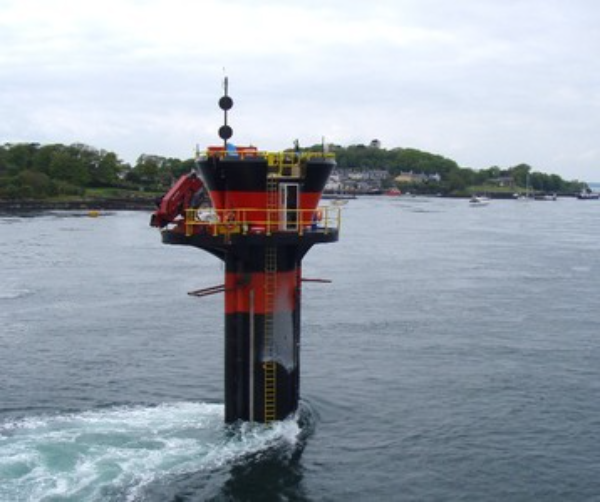
Have you ever stood on the beach, watching the waves roll in and thought, “Wow, that’s a lot of power?” Well, you’re spot on.
The ocean is a massive, untapped reservoir of energy, and we’re just starting to scratch the surface with tidal and wave energy.
It’s like harnessing the moon’s gravitational pull and the wind’s force to generate electricity.
Sounds like science fiction, but it’s very real and very promising. Ready to ride this wave of innovation?
The Potential of Tidal and Wave Energy
So, let’s talk about why tidal and wave energy are making waves in the renewable energy scene. First off, the ocean is massive, right?
And it’s always in motion, thanks to the gravitational pull of the moon and the energy from the wind.
This means we have a nearly endless source of power that’s just waiting to be tapped into.
Unlike solar or wind energy, which can be intermittent, tides are predictable.
We know when they’re coming, and that makes it easier to plan for electricity generation.
Plus, oceans cover more than 70% of the Earth’s surface, so the potential scale of this energy source is mind-boggling.
Case Studies
Now, you might be wondering, “This sounds great, but is anyone actually doing it?” The answer is a resounding yes!
Take the United Kingdom, for example. They’ve got the European Marine Energy Centre in Orkney, Scotland, where they’re testing various forms of marine energy, including both tidal and wave.
Then there’s the Sihwa Lake Tidal Power Station in South Korea, one of the world’s largest tidal power installations.
And let’s not forget about smaller projects, like those in coastal communities, where tidal turbines are being used to power local grids.
These real-world examples show that tidal and wave energy aren’t just theoretical; they’re practical, scalable, and already making a difference. How cool is that?
The Controversy Around Nuclear Energy: Is It Clean?

Nuclear energy is a topic that can turn a casual dinner conversation into a heated debate.
Is it the clean energy savior we’ve been waiting for, or is it a ticking time bomb?
It’s a bit like the avocado of the energy world, and while some people swear by its benefits, others are wary of the risks.
So, what’s the real story? Is nuclear energy clean, or is it not? Buckle up, because we’re about to dive into the pros, cons, and controversies surrounding this polarizing energy source.
Arguments for and Against Nuclear Energy
Alright, let’s dig into the nitty-gritty of why nuclear energy is such a hot topic.
On one hand, it’s incredibly efficient. A small amount of nuclear material can produce a large amount of energy, and unlike fossil fuels, it doesn’t emit greenhouse gases during electricity generation.
But hold on, there’s another side to this coin. The risks include radioactive waste, which remains hazardous for thousands of years, and the potential for catastrophic accidents. Think Chernobyl or Fukushima.
Plus, there’s the issue of nuclear material potentially being used for non-peaceful means.
So, while it’s a powerful source of energy, it comes with some pretty heavy baggage.
Current Research and Future Prospects
So, where does nuclear energy stand in the grand scheme of things? Well, research is ongoing to make it safer and more efficient.
Scientists are exploring new reactor designs that are less prone to meltdowns and methods for recycling nuclear waste.
It’s like they’re trying to create a safer, more eco-friendly version of this controversial energy source.
And what about the future? Some experts see nuclear energy as a transitional solution, a way to reduce greenhouse gas emissions while other renewable technologies catch up.
Others are more skeptical, pointing to the risks and the high costs of building new reactors.
But one thing’s for sure: the debate around nuclear energy is far from over, and it’s a space to watch closely in the coming years.
An In-Depth Look at Energy Storage Options
So, we’ve talked about all these amazing sources of clean energy, but what happens when the sun isn’t shining or the wind isn’t blowing?
Enter the unsung hero of the renewable energy world: energy storage.
It ensures that we have a steady supply of power even when our renewable sources take a break.
From batteries to pumped hydro, we’re going to delve into the fascinating world of energy storage options. Ready to get charged up?
Importance of Energy Storage
Alright, let’s kick things off by talking about why energy storage is such a crucial piece of the puzzle.
Imagine you’ve cooked up a big batch of your favorite meal. You can’t eat it all at once, right?
You need to store the leftovers for later. The same goes for energy.
Renewable sources like solar and wind are fantastic, but they’re not always available 24/7.
Energy storage acts like your renewable energy “leftovers” container, capturing excess energy when it’s abundant so you can use it when it’s not.
This ensures a more reliable power supply and helps balance the grid, making it more resilient to outages and fluctuations.
Different Methods of Storage
Now, let’s talk about the different “containers” we can use to store this energy.
First up, we have batteries, and not just the AA kind you put in your remote.
We’re talking big, industrial-scale batteries that can store a huge amount of energy.
Lithium-ion batteries are the most common, but new technologies like solid-state and flow batteries are on the horizon.
Then there’s pumped hydro, which is like a big water battery. When there’s excess energy, water is pumped uphill into a reservoir.
When energy is needed, the water flows back down, turning turbines to generate electricity.
It’s a simple but effective method, especially in areas with the right geographical features.
And let’s not forget about other methods like compressed air, where excess energy is used to compress air into an underground cavern.
When energy is needed, the compressed air is released to turn a turbine and generate electricity.
So, as you can see, when it comes to storing energy, we’ve got options.
And these options are key to making the most of our renewable energy sources.
Hydrogen Fuel Cells: A Silent Revolution
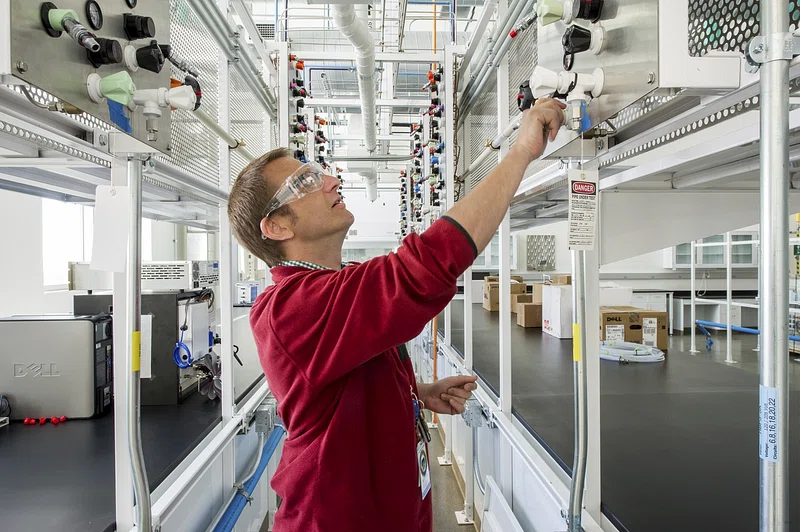
Have you heard the buzz about hydrogen fuel cells? Or should I say, the lack of buzz, because these things are incredibly quiet and efficient.
It’s like the silent revolution happening right under our noses, powering everything from cars to entire buildings with just hydrogen and oxygen.
No noise, no emissions, just water as a byproduct. Sounds too good to be true?
Well, it’s not science fiction; it’s science fact. Ready to learn more about this quietly groundbreaking technology? Let’s get into it!
Basics of Hydrogen Fuel Cells
Alright, let’s start with Hydrogen 101. A hydrogen fuel cell is a device that converts chemical energy into electrical energy.
Imagine it as a sort of magical box where hydrogen gas and oxygen from the air come in, and out comes electricity, heat, and water.
It’s like a super-efficient, clean chemistry experiment that you can actually use in real life. The best part?
Unlike burning fossil fuels, this process doesn’t emit any greenhouse gases. The only byproduct is water, making it one of the cleanest forms of energy out there.
Uses and Limitations
Now, where can you find these amazing hydrogen fuel cells in action?
Well, they’re starting to pop up in a variety of places. You’ve got hydrogen-powered cars that can go hundreds of miles on a single tank and refuel in just minutes.
Then there are buses, trains, and even some experimental aircraft. On a larger scale, hydrogen fuel cells can provide backup or even primary power for buildings and industrial sites.
But hold on, it’s not all sunshine and rainbows. There are some limitations to consider.
First, hydrogen gas is incredibly flammable, so it has to be stored and handled with care.
Second, while hydrogen is abundant, it’s usually bound to other elements like oxygen in water.
Separating it out requires energy, which can negate some of its environmental benefits if that energy isn’t from a clean source.
And lastly, the infrastructure for hydrogen like refueling stations—isn’t as widespread as it is for gasoline or electric charging, at least not yet.
So, while hydrogen fuel cells have some incredibly promising applications, there are still a few hurdles to clear before they become mainstream. But hey, every revolution has its challenges, right?
Electric Vehicles: More Than Just Cars
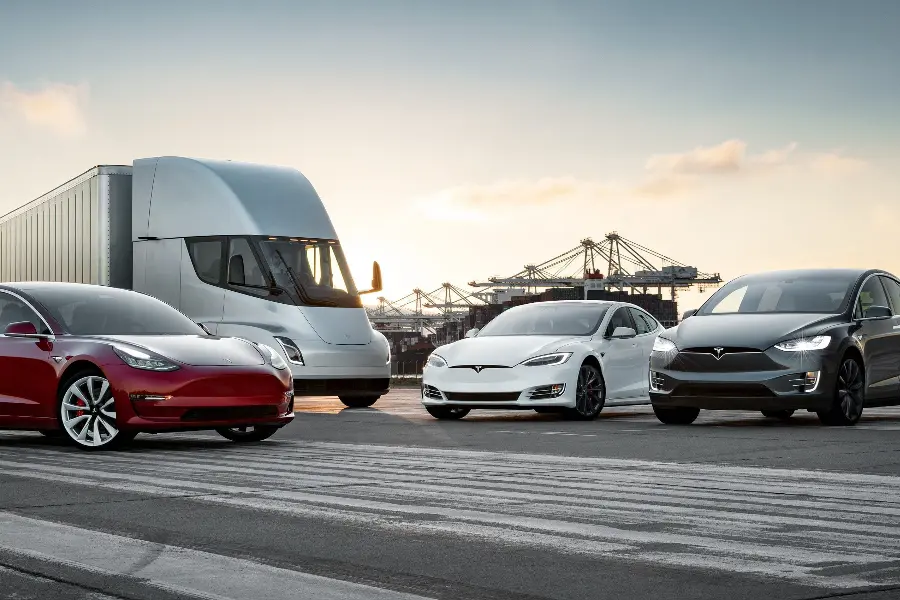
When you hear “electric vehicles,” you probably think of cars, right? But hold onto your hats, because the world of electric vehicles is expanding faster than you can say “zero emissions.”
We’re talking buses, boats, and even planes powered by electricity. It’s like the transportation world got a green makeover, and the results are electrifying literally!
Ready to zoom into the future of electric vehicles that go beyond just four-wheelers? Let’s hit the road!
Types of Electric Vehicles
So, let’s start by expanding our horizons on what electric vehicles (EVs) can be.
Sure, electric cars are the poster child, but there’s so much more out there.
How about electric buses? Cities around the world are starting to replace their old, diesel-guzzling buses with sleek, electric versions.
And don’t even get me started on electric boats. Yep, you can now cruise on the water without a trail of exhaust fumes behind you.
But wait, there’s more! Researchers are even dabbling in electric planes.
While we’re not quite at the point of commercial electric flights, the technology is in the works, and short-haul electric planes could be closer than we think.
Environmental Impact
Now, let’s talk about why this electric revolution is such a big deal for Mother Earth.
Traditional vehicles run on fossil fuels, and we all know the drill there are greenhouse gas emissions, air pollution, and a whole lot of guilt for harming the planet.
Electric vehicles flip the script. They produce zero tailpipe emissions, which is a breath of fresh air for cities struggling with smog and pollution.
And when you power these EVs with electricity from renewable sources like wind or solar, the environmental benefits are even more staggering.
It’s like switching from fast food to a home-cooked, organic meal; the difference is clear, and the planet thanks you for it.
So, whether it’s on land, sea, or air, electric vehicles are making waves in the best way possible, offering a cleaner, greener way to get from point A to point B.
Improving Energy Efficiency in Older Homes

So, you’ve got an older home with loads of charm but not so much when it comes to energy efficiency, huh? Don’t worry, you’re not alone.
Many older homes are energy hogs, but the good news is you can teach an old house new tricks!
From insulation upgrades to smart thermostats, there are plenty of ways to make your vintage abode more energy-efficient.
Ready to give your old home a green makeover? Let’s roll up our sleeves and get started!
Challenges and Solutions
Alright, let’s get real about the challenges of making an older home more energy-efficient.
Older homes often come with outdated heating and cooling systems, poor insulation, and windows that might as well be sieves for all the drafts they let in.
It’s like trying to fill a bucket with a hole in the bottom; no matter how much energy you pour in, some of it’s going to leak out.
But here’s the good news: there are solutions. For starters, consider upgrading your insulation.
Think of it as putting a cozy winter jacket on your home. It keeps the warm air in and the cold air out, or vice versa in the summer.
Next, look at your windows. Double or triple-pane windows can make a world of difference in keeping your home’s temperature stable.
And don’t forget about smart thermostats. These nifty gadgets learn your habits and adjust the temperature accordingly, so you’re not heating or cooling an empty house.
Cost-Effective Methods
Now, I know what you’re thinking: “This sounds expensive!” But hold on, there are cost-effective ways to boost your home’s energy efficiency.
For example, weatherstripping is a low-cost solution that can seal gaps around windows and doors.
It’s like putting a band-aid on those little leaks that let the outside air in.
Or how about LED light bulbs? They use way less electricity than traditional bulbs and last a lot longer, too.
And let’s not forget about energy-efficient appliances. While the upfront cost might be higher, they’ll save you money in the long run by reducing your energy bills.
Some local governments even offer rebates or tax incentives for making energy-efficient upgrades, so be sure to check out what’s available in your area.
So, whether you’re ready for a full-on home makeover or just some small tweaks, improving the energy efficiency of your older home is totally doable.
And trust me, both your wallet and the planet will thank you for it!
How Government Policies Can Promote Clean Energy
Ever wonder how the government can play a role in boosting clean energy?
Well, it turns out, they’ve got a lot of tools in their toolbox to make it happen.
From tax incentives to renewable portfolio standards, government policies can be a game-changer in how quickly we transition to a cleaner, greener future.
Curious about how it all works? You’re in the right place. Let’s dive into the nitty-gritty of how government policies can give clean energy the push it needs.
Role of Policy
So, let’s start by talking about why government policy is such a big deal in the clean energy landscape.
Think of policy as the rules of the game. Just like how a referee can influence the outcome of a sports match, government policies can steer the energy market in a particular direction.
They can create incentives for using clean energy, impose penalties for pollution, or even set mandates for renewable energy adoption.
It’s like setting the stage where clean energy can not only compete but actually thrive against fossil fuels.
Examples of Effective Policies
Now, let’s look at some real-world examples where policy has made a difference.
First up, tax credits for renewable energy installations. These are like coupons that make it cheaper for you and me to install solar panels or wind turbines.
Then there’s the Renewable Portfolio Standards, which require electric utilities to source a certain percentage of their energy from renewable sources.
It’s a bit like a diet plan for the energy sector, forcing it to cut down on “junk food” like coal and oil.
And let’s not forget about cap-and-trade systems, where companies have to buy permits to emit greenhouse gases.
The fewer emissions, the fewer permits they need to buy, so there’s a financial incentive to go green.
Some countries have even implemented carbon pricing, essentially putting a price tag on pollution.
It’s like saying, “If you’re going to make a mess, you’ve got to pay to clean it up.”
So, whether it’s through incentives, mandates, or penalties, government policies can play a crucial role in promoting clean energy.
And the more we know about these policies, the better we can advocate for ones that will speed up our transition to a sustainable future.
Clean Energy Investment: What You Should Know

Ever thought about putting your money where your values are?
Investing in clean energy is not just good for the planet; it can also be good for your wallet.
From solar startups to established wind farms, there are plenty of opportunities to get a piece of the clean energy pie.
Curious about how to make smart, sustainable investment choices? You’re in the right place.
Let’s dive into the ins and outs of clean energy investment. Ready to make some green while going green? Let’s get started!
Investment Options
Alright, let’s talk about where you can put your hard-earned cash to work in the clean energy sector.
First off, you’ve got individual stocks. These could be companies that are all-in on renewables, like solar panel manufacturers or wind turbine companies.
It’s a bit like betting on a specific player in a sports game; if they do well, so do you.
Next up, there are mutual funds and exchange-traded funds (ETFs) focused on clean energy.
These funds pool money from multiple investors to buy a diversified portfolio of clean energy stocks.
It’s like going to a potluck dinner; you get to sample a little bit of everything, which can spread out the risk.
And don’t forget about bonds! Green bonds are issued to specifically finance environmental projects, including renewable energy.
It’s a way to loan money to organizations making a positive impact, and you get paid back with interest.
Risks and Returns
Now, let’s chat about the other side of the coin: risks and returns.
Like any investment, clean energy has its ups and downs. The sector is somewhat dependent on government policies, technological advancements, and economic factors.
It’s like planting a garden; you need the right conditions for things to grow.
However, the potential returns can be substantial. As the world moves toward a more sustainable future, demand for clean energy is likely to increase.
That could mean higher stock prices for companies in this sector and more interest in related investment products.
Plus, there’s the added bonus of knowing your money is contributing to a cleaner, healthier planet.
It’s not just about making money; it’s about making a difference.
So, whether you’re a seasoned investor or a newbie looking to diversify, Clean Energy offers a range of options to both grow your portfolio and contribute to a sustainable future. How cool is that?
How Communities are Leading the Way in Clean Energy
Ever noticed how sometimes the best changes start right in our own backyards?
Well, when it comes to clean energy, communities across the globe are stepping up in big ways.
From local solar projects to neighborhood wind farms, it’s like a grassroots movement for a greener future.
Curious about how everyday people are making a world of difference?
Stick around as we explore how communities are leading the charge in the clean energy revolution. Ready to get inspired? Let’s go!
Community-Led Initiatives
Alright, let’s dive into the ways communities are taking the reins on clean energy.
One popular approach is community solar gardens. Imagine a communal vegetable garden, but instead of tomatoes and zucchini, you’re growing solar energy.
Residents can buy or lease a share of a larger solar farm and get credit on their electricity bills for the energy produced.
It’s a fantastic option for those who can’t install solar panels on their own homes.
Then there are microgrids, smaller-scale power grids that can operate independently from the main grid.
These are especially useful in remote or rural areas, where energy access can be a challenge.
It’s like having a neighborhood watch but for energy, local folks looking out for each other and making sure everyone has the power they need.
Success Stories
Now, let’s talk about some real-world examples where community-led initiatives have made a big impact.
In Kodiak, Alaska, they’ve managed to source nearly 100% of their electricity from renewable sources like wind and hydro.
It’s a small community, but they’ve become a big example of what’s possible.
Or take the island of Samsø in Denmark, which is entirely powered by renewable energy.
Residents invested in wind turbines and solar installations, and now they’re not just energy self-sufficient; they’re also exporting clean energy to the mainland.
It’s like a local sports team making it to the big leagues.
And let’s not forget about urban examples. Cities like San Francisco and Austin have community programs that encourage residents to install solar panels, offering financial incentives and even free installations for low-income households.
So, from small towns to big cities, communities are showing that you don’t have to wait for national policies to make a change.
You can start right where you are, with the people around you. How empowering is that?
The Link Between Clean Energy and Job Market
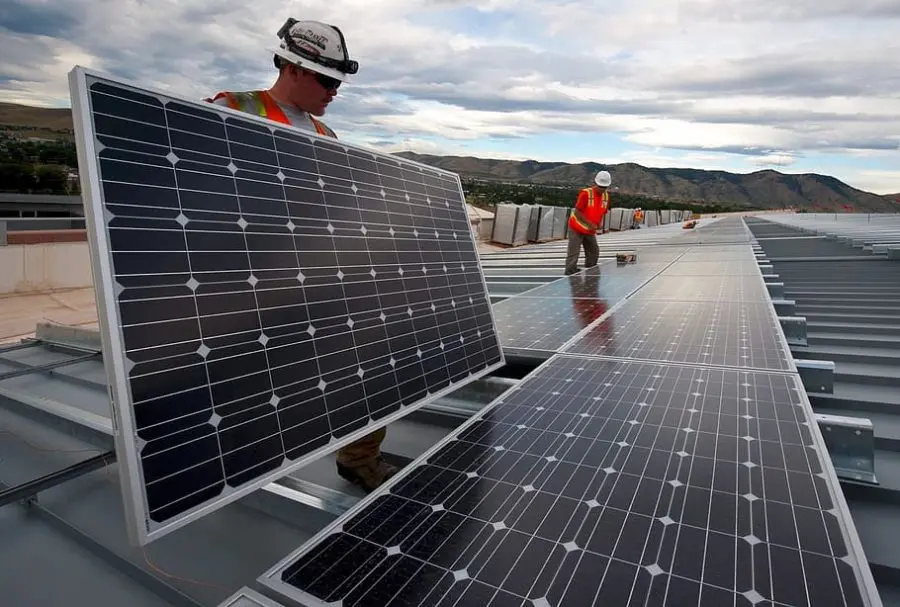
Ever thought about how going green could also mean more green in your wallet?
Yep, the clean energy sector isn’t just good for the planet; it’s also becoming a booming job market.
From solar panel installers to wind turbine technicians, new career paths are opening up left and right.
Curious about how clean energy is fueling job growth? You’re in the right place.
Let’s dive into the exciting intersection of clean energy and the job market. Ready to explore some career-changing opportunities?
Employment Opportunities
So, let’s start by talking about the kinds of jobs that are popping up in the clean energy sector.
First off, there are the obvious ones like solar panel installers and wind turbine technicians.
These are the folks on the front lines, getting their hands dirty to actually build the infrastructure we need.
It’s like the construction boom of the past, but with a green twist.
But the job opportunities don’t stop there.
Think about all the engineers, researchers, and scientists working behind the scenes to develop new technologies.
Or the sales and marketing teams that help spread the word about clean energy solutions.
And let’s not forget about the policy analysts, advocates, and educators who help shape public opinion and regulations.
The clean energy job market is like a bustling city; there’s something for everyone, no matter your skill set or interests.
Economic Benefits
Now, let’s talk dollars and cents. The clean energy sector isn’t just creating jobs. It’s also pumping money into the economy.
According to various reports, investments in clean energy can generate two to three times more jobs than similar investments in fossil fuel industries.
It’s like choosing between two investment portfolios and picking the one with the higher returns.
Plus, these jobs often pay well and provide good benefits, which means more money in people’s pockets and a stronger consumer economy.
And because many of these jobs can’t be outsourced, they contribute to local economies, too.
It’s a ripple effect of goodness—good for workers, good for communities, and good for the planet.
So, whether you’re looking for a career change or just interested in the economic benefits of clean energy, the link between this sector and the job market is a win-win situation. How great is that?
Global Trends in Renewable Energy:
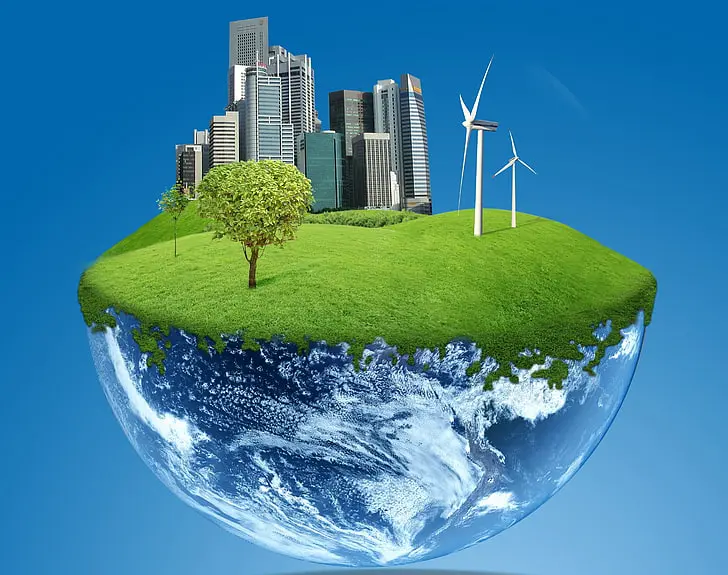
Ever wondered how the clean energy movement is shaping up around the world?
Well, 2023 is turning out to be a pretty exciting year for renewables. From massive solar farms in the deserts to wind turbines dotting the landscapes of multiple continents, the global shift toward clean energy is in full swing.
Curious about what’s hot and what’s not in the world of renewables this year?
Stick around as we take a whirlwind tour of global trends in renewable energy. Ready for a journey around the green globe?
Recent Innovations
Alright, let’s kick things off with some of the coolest innovations we’ve seen recently.
First up, floating solar farms. Yep, you heard that right. Countries with limited land space are installing solar panels on bodies of water.
It’s like having an offshore oil rig, but way, way cleaner.
Then there’s the rise of smart grids. These are electricity networks that use digital technology to better manage energy resources.
Imagine your power grid has a brain and could optimize energy distribution all by itself. It’s making our energy systems more efficient and resilient.
And let’s not forget about green hydrogen. Produced using renewable energy, this form of hydrogen could be a game-changer for sectors like transportation and industry.
It’s like finding a new, versatile ingredient that could spice up multiple dishes on the energy menu.
Future Predictions
Now, what can we expect to see in the coming years? Well, experts are pretty optimistic.
For starters, renewable energy is expected to become increasingly cost-competitive with fossil fuels.
It’s like when flat-screen TVs first came out. They were expensive, but the prices dropped as the technology improved.
We’re also likely to see more integration of renewable energy sources into our daily lives.
Think solar-powered charging stations in parking lots or wind turbines built into the architecture of new buildings.
It’s as if clean energy is becoming a standard feature, not just an optional upgrade.
And finally, as countries around the world ramp up their climate goals, we can expect to see even more investment in renewable technologies.
From government grants to private sector funding, the financial backing is there to push the envelope on what’s possible.
So, whether you’re keeping tabs on the latest tech or just curious about what the future holds, the global trends in renewable energy are looking brighter than ever.
Overcoming Financial Barriers to Adopt Clean Energy
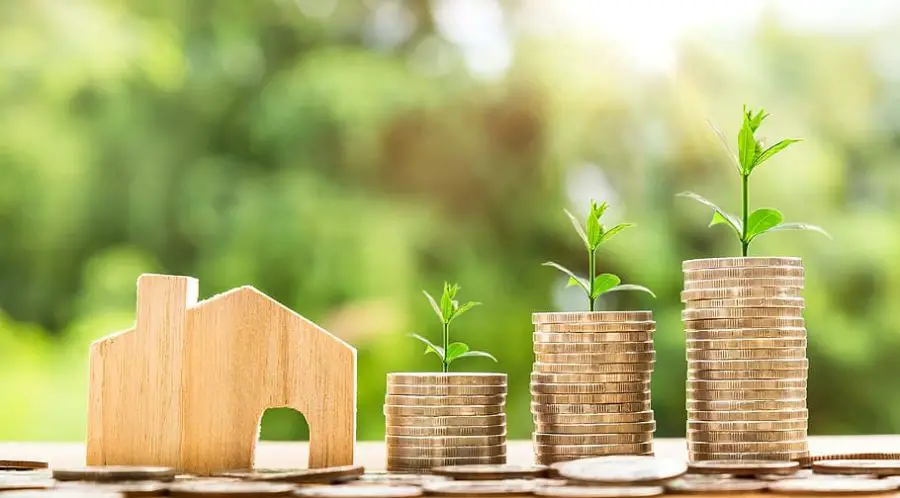
So, you’re eager to jump on the clean energy bandwagon, but your wallet is saying, “Hold on a minute!”
We get it; switching to renewable energy can seem like a hefty financial commitment.
But what if I told you there are ways to make it more affordable? From grants to tax incentives, there are plenty of financial tools to help you go green without going broke.
Ready to break down those financial barriers and make clean energy a reality for you? Let’s dive in and explore your options!
Grants and Incentives
First off, let’s talk about the free money, grants, and incentives that can help you make the switch to clean energy.
Many local, state, and federal governments offer grants to homeowners and businesses willing to invest in renewable energy systems.
It’s like getting a scholarship for being eco-friendly! These grants can cover a significant portion of the costs for things like solar panel installations or energy-efficient appliances.
And don’t forget about tax incentives. Some places offer tax credits or deductions for clean energy upgrades, meaning you could get some money back when tax season rolls around.
It’s like having a coupon that you can use at the end of the year to reduce your tax bill.
Creative Financing
Now, if grants and tax incentives aren’t cutting it, there are other creative ways to finance your clean energy dreams.
One popular option is Power Purchase Agreements (PPAs), where a third party installs and maintains a renewable energy system on your property, and you agree to buy the energy it produces.
It’s a win-win; you get clean energy without the upfront costs, and the provider gets a steady customer.
Another route is taking out a green loan specifically designed for eco-friendly projects.
These loans often come with lower interest rates and more favorable terms than traditional loans.
Think of it as a car loan, but instead of a gas-guzzler, you’re investing in something that’s good for the planet.
And let’s not overlook community crowdfunding. Some neighborhoods are pooling resources to invest in shared renewable energy projects.
It’s like when neighbors chip in to build a community garden, but in this case, it’s a solar farm or wind turbine that benefits everyone.
So, whether you’re looking for a grant, considering a loan, or thinking outside the box with community funding, there are plenty of ways to overcome financial barriers and make clean energy accessible.
The Role of Social Norms in Clean Energy Adoption
Ever notice how what’s “cool” or “normal” can change over time? Well, the same goes for clean energy.
As more people adopt renewable energy sources, it starts to shift what’s considered the norm in our society.
And guess what? That social momentum can actually speed up the transition to a greener future.
Curious about how our collective behavior and attitudes can make a big difference?
Stick around as we delve into the fascinating role of social norms in clean energy adoption. Ready to be part of the change? Let’s dive in!
Cultural Perspectives
Let’s start by talking about how culture shapes our views on clean energy.
In some communities, being eco-friendly is as common as having a cup of coffee in the morning.
Solar panels on rooftops and electric cars in driveways are the norm, not the exception.
It’s like when everyone in your neighborhood starts gardening; pretty soon, you’re thinking about planting some tomatoes yourself.
But in other places, clean energy might still be seen as something only for the wealthy or the ultra-environmentalists.
It’s like when a new trend hits the big cities but takes a while to reach smaller towns.
The point is, that cultural perspectives can either speed up or slow down clean energy adoption, depending on what’s considered “normal” or “desirable” in a given community.
How to Instigate Change
So, how can we tip the scales and make clean energy the new norm? Well, one way is through education and awareness.
The more people know about the benefits of clean energy, the more likely they are to embrace it.
It’s like when you discover a great new restaurant; you can’t help but tell all your friends about it.
Another strategy is to make clean energy more visible. When people see solar panels on local schools or wind turbines near highways, they start to become part of the landscape, both literally and culturally.
It’s akin to how seeing everyone wear seat belts makes you more likely to buckle up.
And let’s not forget the power of social proof. If influential community members adopt clean energy, it can encourage others to follow suit.
It’s like when the popular kid in school starts wearing a new brand; suddenly, everyone wants to wear it.
So, whether it’s through education, visibility, or social influence, changing social norms around clean energy is totally doable.
And the more of us who jump on board, the faster we’ll get to a cleaner, greener future. How awesome is that?
Future Technologies That Will Boost Clean Energy
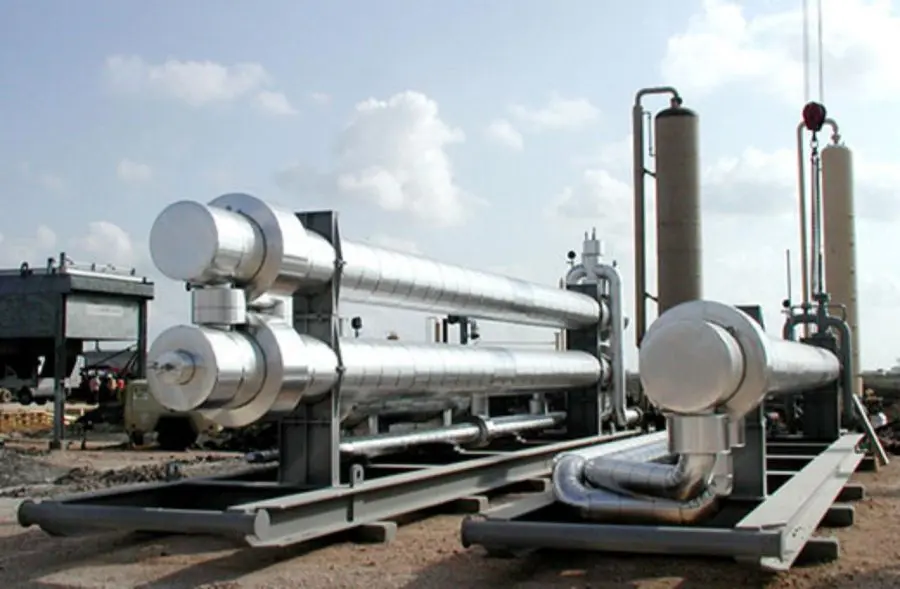
Ever get excited about what tomorrow might bring? Well, when it comes to clean energy, the future is looking brighter than a solar panel on a sunny day.
From advanced batteries to artificial intelligence, emerging technologies are set to give clean energy a serious boost.
Curious about what’s on the horizon and how it could revolutionize the way we power our lives?
You’re in the right place. Let’s take a sneak peek at the future technologies that are about to supercharge the clean energy sector. Ready to have your mind blown? Let’s go!
Emerging Technologies
Alright, let’s get into the nitty-gritty of some emerging technologies that are turning heads in the clean energy sector.
First up, advanced energy storage. We’re talking about batteries that can store more energy, charge faster, and last longer.
It’s like upgrading from a flip phone to a smartphone; the capabilities just skyrocket.
Next, there’s the use of artificial intelligence (AI) to optimize energy consumption.
Imagine a system that can predict your energy needs and adjust your home’s heating or cooling accordingly.
It’s like having a personal assistant that makes sure you’re comfortable while using as little energy as possible.
And let’s not forget about new materials like perovskite solar cells. These could make solar panels cheaper and more efficient, opening the door for more widespread adoption.
Think of it as switching from regular to premium fuel; you get more bang for your buck.
How They Will Shape the Future
Now, how are these technologies going to shape the future of clean energy?
Well, advanced energy storage could make renewable sources like solar and wind more reliable, filling in the gaps when the sun isn’t shining or the wind isn’t blowing.
It’s like having a backup generator that kicks in whenever you need it.
AI optimization could make our entire energy infrastructure more efficient, from power plants to your own home.
It’s akin to a traffic management system that makes sure every car on the road gets to its destination as quickly and smoothly as possible.
And as for new materials like perovskite solar cells, they could make clean energy solutions more affordable and accessible for everyone.
It’s like when flat-screen TVs became affordable; suddenly, every household could have one.
So, whether it’s through better storage, smarter management, or more efficient materials, emerging technologies are set to give clean energy a major boost.
The future is looking bright, and I, for one, can’t wait to see where these innovations take us. How about you?
How Big Data is Shaping the Clean Energy Sector

Hey there, data geeks and eco-fans! Ever thought about how big data is like the secret sauce in the recipe for clean energy?
Yep, the ability to collect and analyze massive amounts of information is changing the game in the renewable energy sector.
From optimizing power grids to predicting equipment maintenance, big data is helping us get smarter about how we generate and use clean energy.
Curious about how all those numbers and algorithms are making a greener world?
Stick around as we delve into the transformative role of big data in the clean energy sector.
Ready to crunch some numbers? Let’s dive in!
The Role of Analytics
Alright, let’s start by diving into the role analytics plays in the clean energy sector.
Think of big data analytics as the detective work behind clean energy.
It sifts through mountains of data to find patterns, make predictions, and offer insights that can help us use energy more efficiently.
For example, analytics can help utility companies understand when electricity demand will peak, so they can adjust their energy supply accordingly.
It’s like having a weather forecast for energy use, helping us prepare for what’s coming.
But that’s not all. Analytics can also help in the predictive maintenance of renewable energy installations.
Imagine knowing exactly when a wind turbine is likely to need repairs before it actually breaks down.
It’s like your car telling you it’s time for an oil change before the engine starts to grumble.
Case Studies
Now, let’s look at some real-world examples where big data has made a big impact.
In California, analytics are being used to optimize the state’s power grid.
By analyzing data from various sources, the state can better manage its mix of renewable and non-renewable energy sources.
It’s like a chef perfectly timing all the dishes so everything is ready at the same time, making the entire meal or in this case, the energy grid more efficient.
Another fascinating case is in Denmark, where big data is used to optimize wind energy production.
Sensors on wind turbines collect data on wind speed, direction, and other factors.
This data is then analyzed to adjust the turbine blades for maximum efficiency.
It’s like tuning a musical instrument to get the best sound quality, but in this case, it’s about getting the most energy out of the wind.
So, whether it’s optimizing energy supply or keeping renewable installations running smoothly, big data analytics is becoming an invaluable tool in the clean energy toolkit.
And the more we learn, the smarter we’ll get about powering our world in a sustainable way. How cool is that?
A Comparison of Clean Energy Certifications
Ever find yourself wondering how to tell if a clean energy product or service is really as eco-friendly as it claims?
Or maybe you’re looking to boost your own credentials in the clean energy field?
Either way, certifications can be your guiding star. From LEED to Energy Star, there’s a whole alphabet soup of certifications out there, each with its own focus and criteria.
Ready to navigate this maze and find out which certifications are worth your time and trust?
Stick around as we break down and compare the most recognized clean energy certifications out there. Let’s get started!
Types of Certifications
Alright, let’s dive into the different types of clean energy certifications you might come across.
First up, there’s LEED, or Leadership in Energy and Environmental Design. This is the go-to certification for green buildings. It’s like the Ivy League of eco-friendly construction; if a building has a LEED plaque, you know it’s top-notch in sustainability.
Then we have Energy Star, which you’ve probably seen on appliances. This certification ensures that the product you’re buying is energy-efficient. It’s like the nutrition label on food, but for energy consumption.
And let’s not forget about the Renewable Energy Certificates (RECs). These are proof that a certain amount of electricity was generated from renewable sources. It’s like a stamp of approval saying, “Yes, this energy is green.”
Why They Matter
Now, why should you care about these certifications?
Well, for starters, they give you a reliable way to gauge the eco-friendliness of a product, service, or building.
It’s like reading reviews before making a purchase; you want to know you’re getting something good.
Certifications also matter for businesses and professionals in the clean energy sector.
Having a certified product or being a certified professional can give you a competitive edge. It’s like having a diploma; it adds credibility and can open doors for you.
Plus, these certifications often come with guidelines and standards that push the industry forward.
By striving to meet or exceed these criteria, companies are encouraged to innovate and improve.
It’s like setting a new personal best in sports; once you know what’s possible, you aim even higher.
So, whether you’re a consumer, a professional, or just someone interested in clean energy, understanding the different certifications can help you make informed decisions.
It’s a way to ensure you’re contributing to a more sustainable and eco-friendly world. How great is that?
The Significance of Smart Grids in Clean Energy
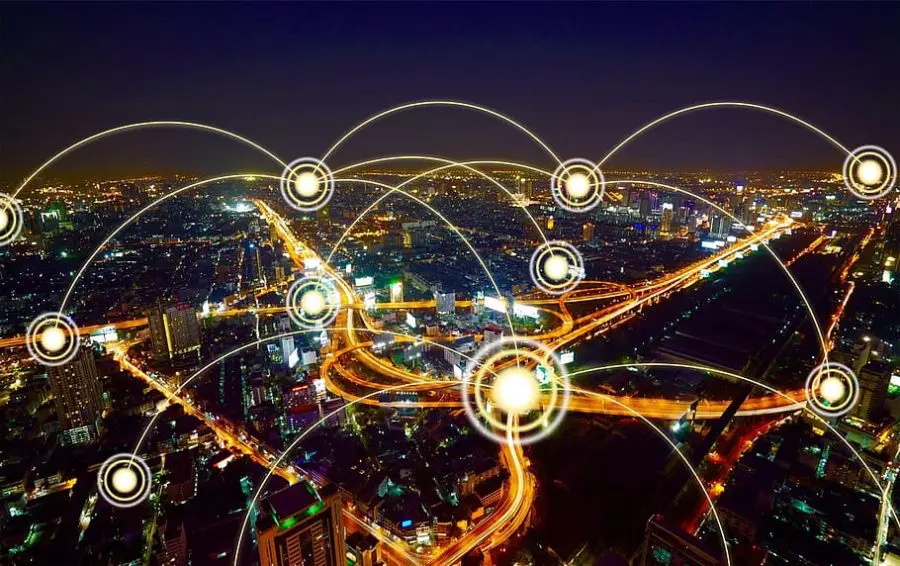
Ever heard of smart grids and wondered what all the buzz is about? Well, these aren’t your grandma’s electrical grids.
Smart grids are like the Internet of Things, but for electricity. They use digital technology to improve the efficiency, reliability, and sustainability of electricity distribution.
Curious about how this high-tech upgrade can be a game-changer for clean energy?
You’re in the right place. Let’s dive into the world of smart grids and explore why they’re such a big deal in the clean energy landscape. Ready to get enlightened?
What is a Smart Grid?
So, let’s start with the basics: What exactly is a smart grid? Imagine your traditional electrical grid got a 21st-century makeover.
Instead of just transmitting electricity from point A to point B, a smart grid uses digital technology to monitor and manage electricity flow.
It’s like upgrading from a basic cell phone to a smartphone; suddenly, you’ve got a lot more capabilities.
Smart grids can adjust to changes in electricity demand in real time, communicate with connected devices, and even self-repair when there’s an outage.
It’s like having a really smart traffic light system that can adapt to road conditions and keep everything flowing smoothly.
Benefits and Challenges
Now, let’s talk about the good stuff and the not-so-good stuff.
On the benefits side, smart grids can make our energy systems way more efficient.
They can balance supply and demand, integrate more renewable energy sources, and reduce energy waste.
It’s like having a really good coach who knows how to bring out the best in every player on the team.
But it’s not all sunshine and rainbows. One of the challenges is the cost of upgrading existing infrastructure.
It’s a big investment, kind of like renovating an old house; it takes time and money.
There’s also the issue of cybersecurity. With all that digital technology, smart grids are more vulnerable to hacking and other security risks.
It’s like having a high-tech security system; it’s great when it works, but if someone cracks the code, you’ve got a problem.
So, while smart grids offer a ton of benefits for clean energy, they also come with their own set of challenges that need to be addressed.
But hey, no game-changing innovation comes without its hurdles, right?
And the potential benefits, from boosting clean energy to making our electricity systems more resilient, make smart grids a pretty exciting frontier in the clean energy landscape.
Advancements in Thin-Film Solar Cells

Do you know how technology keeps getting smaller and more efficient?
Well, the same thing is happening in the world of solar energy, specifically with thin-film solar cells.
These aren’t your typical bulky solar panels; they’re sleek, lightweight, and more versatile than ever.
Curious about how these advancements in thin-film technology are making solar energy more accessible and efficient?
Let’s dive into the cutting-edge world of thin-film solar cells and see what all the excitement is about. Ready to catch some rays?
What are Thin-Film Solar Cells?
Alright, let’s kick things off by defining what thin-film solar cells actually are.
Imagine the traditional solar panels you’re used to seeing, but make them thinner, lighter, and more flexible.
Thin-film solar cells are made by layering semiconductor materials on a thin surface, like glass or plastic.
It’s like going from a hardcover book to an e-reader; same content, but is way more portable and convenient.
These cells can be so thin that they’re almost like a sticker you can place on various surfaces.
Imagine turning your car roof or even your windows into a mini power station.
It’s like having portable chargers, but these are powered by the sun and can be integrated into the very fabric of buildings, vehicles, and more.
How They’re Changing the Game
Now, how are these thin-film solar cells shaking things up? First off, their flexibility and lightweight nature open up a whole new range of applications.
You can put them on curved surfaces, integrate them into clothing, or even roll them up and take them camping.
It’s like the difference between a desktop computer and a laptop; suddenly, you’re not tied down to one spot.
Another game-changer is their cost. Because they use less material and are easier to manufacture, thin-film solar cells are generally cheaper than traditional solar panels.
It’s like choosing between a high-end restaurant and a quality food truck; both can be great, but one is definitely more budget-friendly.
However, it’s worth noting that thin-film solar cells are generally less efficient than their bulkier counterparts.
However ongoing research is closing that gap, making them an increasingly viable option for various applications.
It’s like when electric cars first came out; the range wasn’t great, but technology has improved to the point where they’re a practical choice for many people.
So, whether it’s their versatility, affordability, or the exciting new applications they make possible, thin-film solar cells are definitely a technology to keep an eye on.
They’re expanding the horizons of what’s possible with solar energy, and that’s something worth getting excited about. Ready to see what the future holds?
The Impact of Climate Change on Clean Energy Strategies
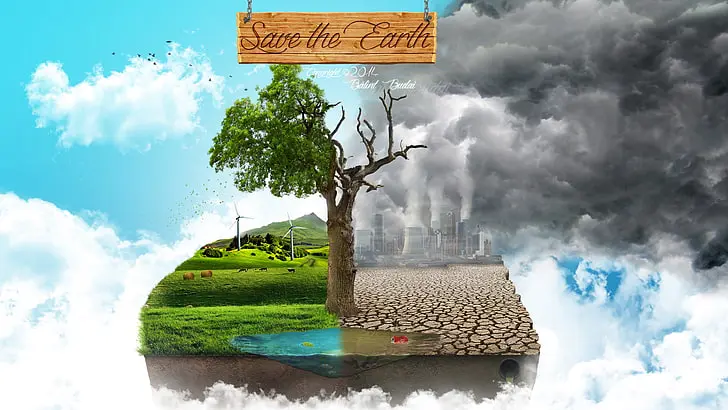
Hey there, climate warriors and clean energy fans! Ever wonder how the changing climate is affecting our approach to clean energy?
It’s like a feedback loop; as the climate changes, it influences how urgently we need to adopt clean energy, but it also affects how we go about it.
From shifting weather patterns to rising sea levels, climate change is reshaping the landscape literally and figuratively for clean energy strategies.
Curious about how these two monumental issues intersect and what it means for our future?
Let’s delve into the complex relationship between climate change and clean energy strategies. Ready for a deep dive?
How Climate Change is Affecting Clean Energy
So, let’s start by looking at how climate change is influencing the clean energy sector.
First off, the increasing frequency of extreme weather events like hurricanes and wildfires is putting a strain on our existing energy infrastructure.
It’s like your old car struggling to handle a cross-country road trip; it wasn’t built for these new challenges.
This situation is making the case for renewable energy sources like wind and solar even stronger.
These sources are generally more resilient and adaptable to changing conditions.
For example, solar panels can still generate electricity even when the grid goes down due to a storm.
It’s like having a backup generator, but one that’s powered by the sun.
But there’s a flip side. Climate change can also impact the effectiveness of these renewable sources.
For instance, changing wind patterns can affect wind energy production, and prolonged cloudy periods can impact solar energy.
It’s like a seasoned athlete having to adapt to a new playing field; the rules of the game are changing.
Adaptation Strategies
Now, how are we adapting our clean energy strategies to deal with these challenges?
One approach is to make our renewable energy infrastructure more resilient.
This could mean designing wind turbines that can withstand stronger storms or developing energy storage solutions that can provide backup power during outages.
It’s like upgrading your home to withstand earthquakes; you’re reinforcing the structure to handle new challenges.
Another strategy is diversification
By not putting all our eggs in one basket and relying on a mix of renewable sources, we can better adapt to changing conditions.
It’s like having a diversified investment portfolio; if one sector takes a hit, the others can help balance it out.
Let’s not forget about innovation
New technologies like advanced energy storage and smart grids can help us adapt to the challenges posed by climate change.
It’s like developing new medical treatments; as the problem evolves, so does the solution.
So, while climate change presents a host of challenges for clean energy, it also drives innovation and adaptation.
It’s a complex relationship, but one that’s crucial for our planet’s future. Ready to explore more about how we can rise to the challenge?
Closing Thoughts

Well, folks, we’ve been on quite a journey, haven’t we? From the nitty-gritty of solar panels to the complexities of smart grids, we’ve covered a lot of ground in the world of clean energy.
It’s a bit like taking a cross-country road trip; you see different landscapes, and meet various challenges, but ultimately, it’s all part of a bigger picture.
As we wrap up, let’s take a moment to reflect on why all of this matters and what we can do to keep pushing the needle toward a more sustainable future.
Ready for some final thoughts? Let’s wrap this up!
Summary of the Importance of Transitioning to Clean Energy
So, let’s take a step back and look at the big picture. Transitioning to clean energy isn’t just a nice idea. It’s a necessity.
We’re talking about combating climate change, reducing pollution, and creating a more sustainable future for ourselves and the generations to come.
It’s like switching from fast food to a balanced diet; the benefits are both immediate and long-lasting.
Clean energy sources like solar, wind, and hydro don’t emit greenhouse gases, which is a big win for our planet.
Plus, they’re renewable, meaning they won’t run out like fossil fuels. It’s like having a garden that keeps producing veggies year after year; it’s a gift that keeps on giving.
Final Call to Action: How the Reader Can Contribute
Now, you might be wondering, “What can I do to make a difference?” Great question!
First off, consider making small changes in your own life. Maybe install some solar panels on your roof, or switch to an electric vehicle.
It’s like starting a fitness routine; every little bit helps, and it all adds up over time.
But don’t stop there. Advocate for clean energy policies in your community, support companies that are committed to sustainability, and educate others about the importance of making the switch.
It’s like being a team captain; you set the example and encourage others to follow suit.
So, whether you’re taking steps in your personal life or rallying your community, remember: every effort counts.
Together, we can transition to clean energy and create a brighter, more sustainable future. Ready to take the first step? Let’s do this!

